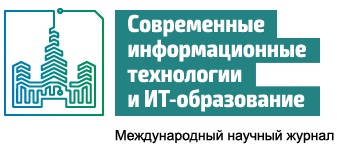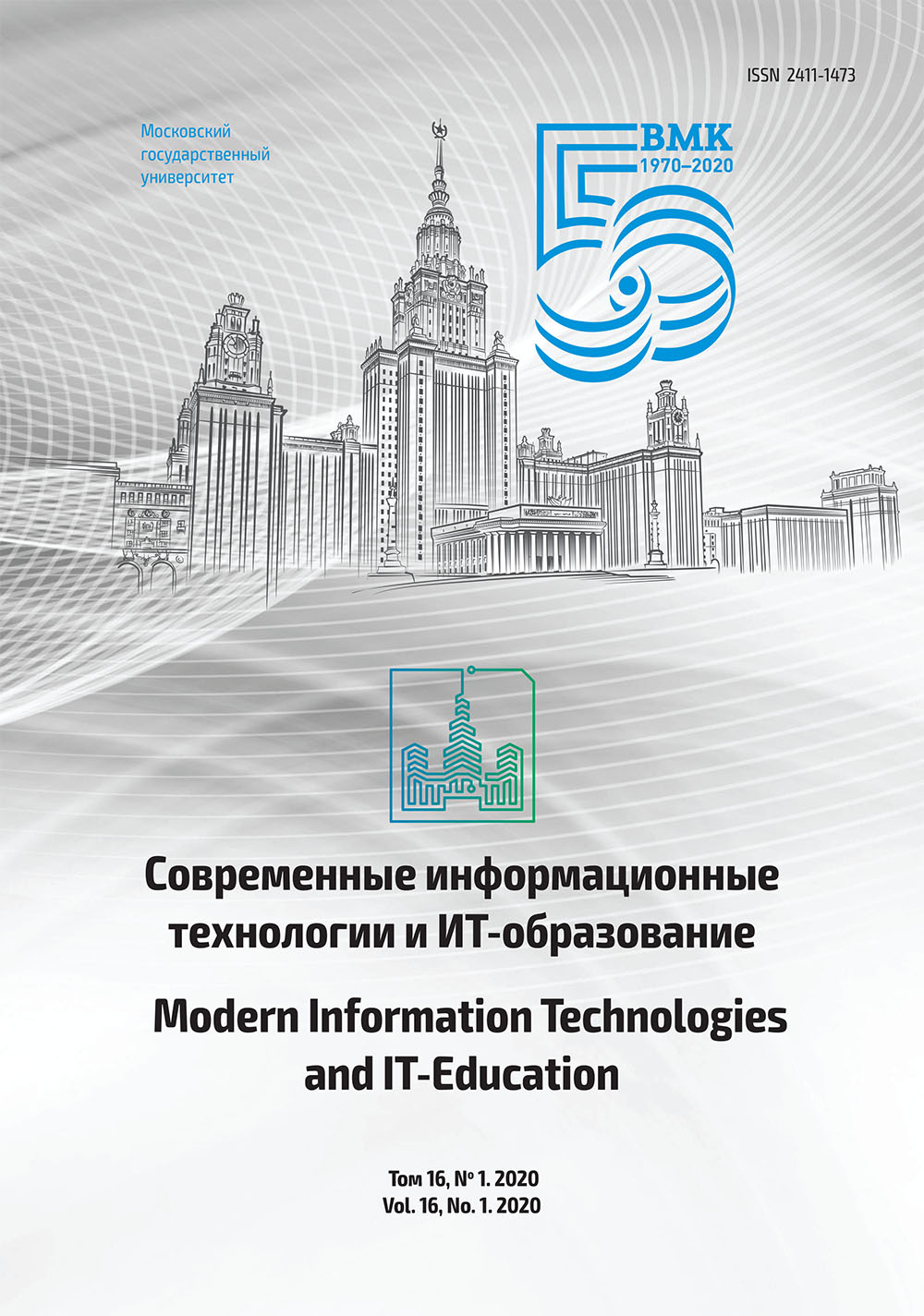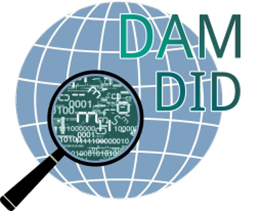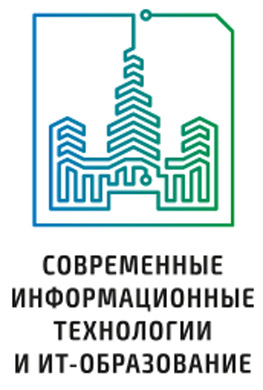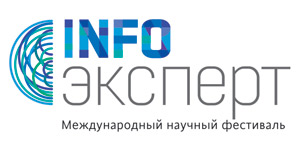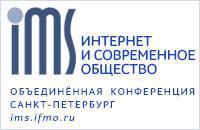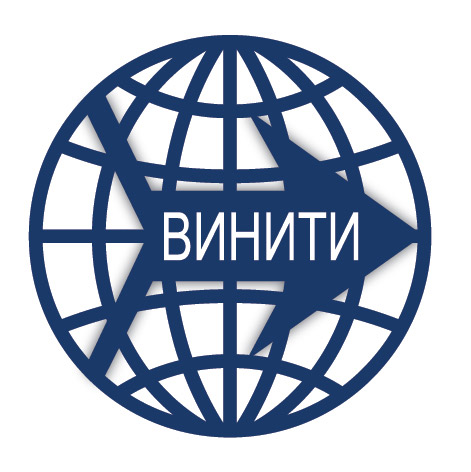Опыт преподавания математических дисциплин с использованием электронного обучения и дистанционных образовательных технологий в период пандемии COVID-19
Аннотация
В статье исследуется опыт реализации электронного обучения (ЭО) с использованием дистанционных образовательных технологий (ДОТ) в период пандемии COVID-19 на примере дисциплины "Численные методы". Обучение проводилось на факультете математики и информатики Таврической академии Крымского федерального университета им. В.И.Вернадского для студентов 3 курса направлений подготовки 01.03.01 Математика, 01.03.02 Прикладная математика и информатика, 01.03.04 Прикладная математика (всего 107 обучающихся) с марта по май 2020 года. В качестве основной платформы обучения была использована социальная сеть ВКонтакте (ВК) с подключением платформ Discord, YouTube, HP Reveal. Основным типом образовательного контента в разработанной модели ЭО являлась авторская видеолекция. Обратная связь была реализована посредством обсуждения в текстовых и голосовых чатах, видеозащиты программного кода лабораторных работ, демонстрации результатов выполненных заданий в рукописном (фото) или печатном форматах, в виде скриншотов или видеопояснений, в том числе с элементами дополненной реальности. Эффективность методического подхода подтверждена результатами опросов обучающихся (81,7% студентов в анонимном опросе оценили качество преподавания дисциплины на «отлично») и ростом успеваемости, зарегистрированным по итогам контрольных работ с использованием метода взаимной оценки (на 32,2% в среднем). Подтверждено, что для организации ЭО по математическим дисциплинам при планировании учебного процесса, подготовке учебных материалов и контрольных мероприятий преподавателю необходимо придерживаться принципов интерактивного обучения и мультимодальности, а также требований веб-доступности. Наилучшим методом изложения нового материала признана авторская видеолекция-скринкаст (выбор 83,7% обучающихся) в сопровождении субтитров, подробных пояснений лектора (аудиодескрипции) и текстового аналога (конспекта или стенограммы). Новая модель ЭО может быть перенесена в формат МООК без существенных логических изменений и временных затрат.
Литература
[2] Zakharova U., Tanasenko K. MOOK v vysshem obrazovanii: dostoinstva i nedostatki dlya prepodavateley [MOOCs in Higher Education: Advantages and Pitfalls for Instructors]. Voprosy obrazovaniya = Educational Studies Moscow. 2019; (3):176-202. (In Russ., abstract in Eng.) DOI: https://doi.org/10.17323/1814-9545-2019-3-176-202
[3] Kosova E.A., Khalilova M.Yu. Web Accessibility Analysis of Massive Open On-line Courses on Mathematical Disciplines. Vysshee obrazovanie v Rossii = Higher Education in Russia. 2019; 28(10):157-166. (In Russ., abstract in Eng.) DOI: https://doi.org/10.31992/0869-3617-2019-28-10-157-166
[4] Kosova Y., Izetova M. Dostupnost' massovykh otkrytykh onlayn-kursov po matematike dlya obuchayushchikhsya s ogranichennymi vozmozhnostyami zdorov'ya [Accessibility of Massive Open Online Courses on Mathematics for Students with Disabilities]. Voprosy obrazovaniya = Educational Studies Moscow. 2020; (1):205-229. (In Russ., abstract in Eng.) DOI: https://doi.org/10.17323/1814-9545-2020-1-205-229
[5] Juan Á.A., Huertas M.A., Cuypers H., Loch B. Mathematical e-learning [preface to online dossier]. RUSC. Universities and Knowledge Society Journal. 2012; 9(1):278-283. Available at: http://rusc.uoc.edu/rusc/ca/index.php/rusc/article/download/v9n1-aprendizaje-virtual-matematicas/1431-3070-1-PB.pdf (accessed 14.02.2020). (In Eng.)
[6] Akugizibwe E., Ahn J.Yo. Perspectives for effective integration of e-learning tools in university mathematics instruction for developing countries. Education and Information Technologies. 2020; 25(2):889-903. (In Eng.) DOI: https://doi.org/10.1007/s10639-019-09995-z
[7] Dodun O., Panaite E., Seghedin N., Nagîţd G., Dusa P., Neştian G., Slătineanu L. Analysis of an E-learning Platform use by Means of the Axiomatic Design. Procedia CIRP. 2015; 34:244-249. (In Eng.) DOI: https://doi.org/10.1016/j.procir.2015.07.059
[8] Buteau C., Jarvis D.H., Lavicza Z. On Integration of Computer Algebra Systems (CAS) by Canadian Mathematics: Results of National Survey. Canadian Journal of Science, Mathematics and Technology Education. 2014; 14 (1):35-57. (In Eng.) DOI: https://doi.org/10.1080/14926156.2014.874614
[9] Kramarski B., Hirsch C. Using computer algebra systems in mathematical classrooms. Journal of Computer Assisted Learning. 2003; 19(1):35-45. (In Eng.) DOI: https://doi.org/10.1046/j.0266-4909.2003.00004.x
[10] Kendal M., Stacey K., Pierce R. The Influence of a Computer Algebra Environment on Teachers’ Practice. In: Guin D., Ruthven K., Trouche L. (ed.) The Didactical Challenge of Symbolic Calculators. Mathematics Education Library. 2005; 36:83-112. Springer, Boston, MA. (In Eng.) DOI: https://doi.org/10.1007/0-387-23435-7_5
[11] Sankar D.S., Karri R.R. Some Effective Methods for Teaching Mathematics Courses in Technological Universities. International Journal of Education and Information Studies. 2016; 6(1):11-18. Available at: https://www.ripublication.com/ijeis16/ijeisv6n1_03.pdf (accessed 14.02.2020). (In Eng.)
[12] Álvarez D., Moreno D., Orduna P., Pascual V., San Vicente F.J. Maths: from distance to e-learning. International Journal of Interactive Multimedia and Artificial Intelligence. Special Issue on Teaching Mathematics Using New and Classic Tools. 2015; 3(4):5-12. (In Eng.) DOI: http://doi.org/10.9781/ijimai.2015.341
[13] Ahn J.Yo., Edwin A. An e-Learning Model for Teaching Mathematics on an Open Source Learning Platform. The International Review of Research in Open and Distributed Learning. 2018; 19(5):255-267. (In Eng.) DOI: https://doi.org/10.19173/irrodl.v19i5.3733
[14] Canoy J.C.D., Buan A.T., Lahoylahoy M.E., Dinawanao D.D. Student-Centered e-Learning Course in Mathematics Utilizing an Open Source Learning Management System. In: Ng Khar Thoe, Devadason Robert Peter, Lay Yoon Fah (ed.) Learning Science and Mathematics Together (LeSMaT) in a Borderless World using Technology. 2016; 2:13-30. SEAMEO RECSAM, Penang, Malaysia. (In Eng.) DOI: https://doi.org/10.13140/RG.2.2.12953.47203
[15] Yanuschik O.V., Pakhomova E.G., Batbold K. E-learning as a Way to Improve the Quality of Educational for International Students. Procedia - Social and Behavioral Sciences. 2015; 215:147-155. (In Eng.) DOI: https://doi.org/10.1016/j.sbspro.2015.11.607
[16] Owen H., Dunham N. Reflections on the Use of Iterative, Agile and Collaborative Approaches for Blended Flipped Learning Development. Education Sciences. 2015; 5(2):85-103. (In Eng.) DOI: https://doi.org/10.3390/educsci5020085
[17] Smith J.G., Suzuki S. Embedded blended learning within an Algebra classroom: a multimedia capture experi-ment. Journal of Computer Assisted Learning. 2015; 31(2):133-147. (In Eng.) DOI: https://doi.org/10.1111/jcal.12083
[18] Borba M.C., Askar P., Engelbrecht J., Gadanidis G., Llinares S., Aguilar M.S. Blended learning, e learning andmobile learning inmathematics education. ZDM Mathematics Education. 2016; 48(5):589-610. (In Eng.) DOI: https://doi.org/10.1007/s11858-016-0798-4
[19] Borba M.C., Scucuglia R.R.S., Gadanidis G. Phases of digital technologies in mathematics education: the classroom and the Internet in motion. 1st ed. Belo Horizonte: Autêntica; 2014. (In Eng.)
[20] Chiu P.S., Chen H.C., Huang Y.M., Liu C.J., Liu M.C., Shen M.H. A video annotation learning approach to improve the effects of video learning. Innovations in Education and Teaching International. 2018; 55(4):459-469. (In Eng.) DOI: https://doi.org/10.1080/14703297.2016.1213653
[21] Mosley P.L. Lecture Video: Characteristics and Utilizations as an Online Learning Resource. In: Sörensen P.M., Canelas D.A. (ed.) Online Approaches to Chemical Education. 2017; 1261:91-100. American Chemical Society. (In Eng.) DOI: https://doi.org/10.1021/bk-2017-1261.ch008
[22] Merkt M., Weigand S., Heier A., Schwan S. Learning with videos vs. learning with print: The role of interactive features. Learning and Instruction. 2011; 21(6):687-704. (In Eng.) DOI: https://doi.org/10.1016/j.learninstruc.2011.03.004
[23] Abulencia, J.P., Vigeant, M.A., Silverstein, D.L. Using Video Media to Enhance Conceptual Learning in an Undergraduate Thermodynamics Course. In: Proc. 2012 Am. Soc. Eng. Educ. Annu. Conf. Expo.; 2013. Available at: https://www.asee.org/public/conferences/8/papers/3990/download (accessed 14.02.2020). (In Eng.)
[24] Jackman W.M. YouTube Usage in the University Classroom: An Argument for its Pedagogical Benefits. International Journal of Emerging Technologies in Learning. 2019; 14(09):157-166. (In Eng.) DOI: https://doi.org/10.3991/ijet.v14i09.10475
[25] Barns S., Pickering E., Dawes L. Worked Example Videos as a Valuable Blended Learning Resource in Undergraduate Engineering Units. In: Tse N., Huda N., Town G., Inglis D. (ed.) Proceedings of the 28th Annual Conference of the Australasian Association for Engineering Education (AAEE 2017). School of Engineering, Macquarie University, Australia; 2017. p. 1093-1100. Available at: https://eprints.qut.edu.au/115403 (accessed 14.02.2020). (In Eng.)
[26] Wiggins G., McTighe J. Understanding By Design. Assn. for Supervision & Curriculum Development, 2nd Expanded edition; 2005. (In Eng.)
[27] Distance Learning, E-Learning and Blended Learning in Mathematics Education: International Trends in Research and Development. Silverman J., Hoyos V. (ed.) ICME-13 Monographs. Springer, Cham; 2018. (In Eng.) DOI: https://doi.org/10.1007/978-3-319-90790-1
[28] Davila-Guzman N.E., Tiempos N., Maya-Treviño M.L., Sanchez-Vazquez A.I., Cerino F. Educational Content Development to Enhance STEM Learning. International Journal of Emerging Technologies in Learning. 2019; 14(21):235-242. (In Eng.) DOI: https://doi.org/10.3991/ijet.v14i21.11021
[29] Kalelioğlu F. Using Facebook as a Learning Management System: Experiences of Pre-service Teachers. Informatics in Education. 2017; 16(1):83-101. (In Eng.) DOI: https://doi.org/10.15388/infedu.2017.05
[30] Ventista O.M. Self-assessment in Massive Open Online Courses. E-Learning and Digital Media. 2018; 15(4):165-175. (In Eng.) DOI: https://doi.org/10.1177/2042753018784950
[31] Haddadi L., Bouarab‐Dahmani F., Guin N., Berkane T., Lazib S. Peer assessment and groups formation in massive open online courses. Computer Applications in Engineering Education. 2018; 26(5):1873-1887. (In Eng.) DOI: https://doi.org/10.1002/cae.22005
[32] Double K.S., McGrane J.A., Hopfenbeck T.N. The Impact of Peer Assessment on Academic Performance: A Meta-analysis of Control Group Studies. Educational Psychology Review. 2020; 32(2):481-509. (In Eng.) DOI: https://doi.org/10.1007/s10648-019-09510-3
[33] Rotsaert T., Panadero E., Schellens T. Anonymity as an instructional scaffold in peer assessment: its effects on peer feedback quality and evolution in students’ perceptions about peer assessment skills. European Journal of Psychology of Education. 2018; 33(1):75-99. (In Eng.) DOI: https://doi.org/10.1007/s10212-017-0339-8
[34] Alqassab M., Strijbos J.W., Ufer S. Training peer-feedback skills on geometric construction tasks: Role of domain knowledge and peer-feedback levels. European Journal of Psychology of Education. 2018; 33(1):11-30. (In Eng.) DOI: https://doi.org/10.1007/s10212-017-0342-0
[35] Black P., Harrison C., Lee C., Marshall B., Wiliam D. Working inside the Black Box: Assessment for Learning in the Classroom. Phi Delta Kappan. 2004; 86(1):8-21. (In Eng.) DOI: https://doi.org/10.1177/003172170408600105
[36] Suurtamm C., Thompson D.R., Kim R.Y., Moreno L.D., Sayac N., Schukajlow S., Silver E., Ufer S., Vos P. Assessment in Mathematics Education: Large-Scale Assessment and Classroom Assessment. ICME-13 Topical Surveys. Springer, Cham; 2016. (In Eng.) DOI: https://doi.org/10.1007/978-3-319-32394-7
[37] Reinholz D. The assessment cycle: A model for learning through peer assessment. Assessment & Evaluation in Higher Education. 2016; 41(2):301-315. (In Eng.) DOI: https://doi.org/10.1080/02602938.2015.1008982
[38] Fernández-Enríquez R., Delgado-Martín L. Augmented Reality as a Didactic Resource for Teaching Mathematics. Applied Sciences. 2020; 10(7):2560. (In Eng.) DOI: https://doi.org/10.3390/app10072560
[39] Chao W.-H., Chang R.-Ch. Using Augmented Reality to Enhance and Engage Students in Learning Mathematics. Advances in Social Sciences Research Journal. 2018; 5(12):455-464. (In Eng.) DOI: https://doi.org/10.14738/assrj.512.5900
[40] Auliya R.N., Munasiah M. Mathematics learning instrument using augmented reality for learning 3D geometry. IOP Conf. Series: Journal of Physics: Conf. Series. 2019; 1318:012069. (In Eng.) DOI: https://doi.org/10.1088/1742-6596/1318/1/012069
[41] Ramírez-Vega A., Iniesto F., Rodrigo C. Raising awareness of the accessibility challenges in mathematics MOOCs. In: Proceedings of the 5th International Conference on Technological Ecosystems for Enhancing Multiculturality (TEEM 2017). Association for Computing Machinery, New York, NY, USA; 2017. Article 92. (In Eng.) DOI: https://doi.org/10.1145/3144826.3145435

Это произведение доступно по лицензии Creative Commons «Attribution» («Атрибуция») 4.0 Всемирная.
Редакционная политика журнала основывается на традиционных этических принципах российской научной периодики и строится с учетом этических норм работы редакторов и издателей, закрепленных в Кодексе поведения и руководящих принципах наилучшей практики для редактора журнала (Code of Conduct and Best Practice Guidelines for Journal Editors) и Кодексе поведения для издателя журнала (Code of Conduct for Journal Publishers), разработанных Комитетом по публикационной этике - Committee on Publication Ethics (COPE). В процессе издательской деятельности редколлегия журнала руководствуется международными правилами охраны авторского права, нормами действующего законодательства РФ, международными издательскими стандартами и обязательной ссылке на первоисточник.
Журнал позволяет авторам сохранять авторское право без ограничений. Журнал позволяет авторам сохранить права на публикацию без ограничений.
Издательская политика в области авторского права и архивирования определяются «зеленым цветом» в базе данных SHERPA/RoMEO.
Все статьи распространяются на условиях лицензии Creative Commons «Attribution» («Атрибуция») 4.0 Всемирная, которая позволяет другим использовать, распространять, дополнять эту работу с обязательной ссылкой на оригинальную работу и публикацию в этом журналe.
